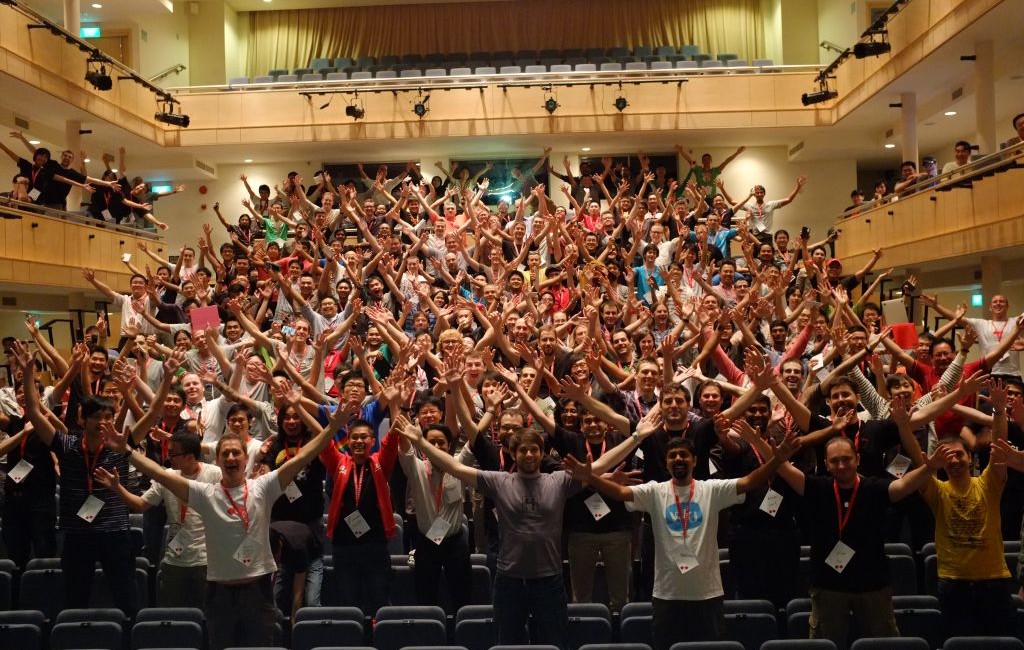What is the best mic / headset / audio setup for a remote distributed team? I get asked this question a lot. In fact, I’ve been asked two times today already, so I thought I’d throw down these thoughts in a post to share with folks.
Audio / Voice
We do a lot of voice calls all day long, every day. For a long time, we used Skype exclusively. More recently, we’ve switched to Google Hangout for our smaller team calls and Skype for our larger calls (more on that later). And like you, we also talk with clients who use a variety different audio tools to communicate without being in the same room.
Here is what not to do:
- Do not use the built-in speaker and mic in your laptop. The problem here is that the mic in your laptop is far away from your mouth and is designed to pick up audio from the entire room. It’s better to use a headset with a boom that places the mic directly in front of your mouth.
- Do not use a wireless headset. We’ve found that these things last about 3 – 4 months tops before they break. They are also prone to interference or dying batteries. This is the last thing you want to worry about while you’re in the middle of a call with people. These are not things we have to deal with when we’re interacting person to person, so it’s best to just eliminate the possibility of problems by going direct with a cable.
- Do not use a USB headset. We’ve found that USB headsets will produce garbled Darth Vader like sound or interference from time to time. Usually, you can remedy this by disconnecting and reconnecting your USB headset, but this is not something you want to have to mess with in the middle of a call with people. If you stay away from USB headsets and go direct into your computer’s sound input jack, you’ll eliminate another potential cause for problems.
- Avoid phone based conference call bridges whenever possible. The main problem here is that most phone bridges are low fidelity audio. Computer audio like Skype and Google Hangouts leverage HD Audio, which we’ve found to make an enormous difference when communicating as a team. It’s amazing how much of a difference it makes to pick up the subtle nuances and tones of voice that you can with HD Audio.
Our recommended audio gear for the Solo Road Warrior:
- A headset with passive noise canceling boom mic (like this Sennheiser). By the way, I have used the one linked for almost 2 years without fail. Removing all the wireless, USB, active noise canceling, complicated nonsense, just leaves a solid performing and reliable headset.
- If you use a mac, you’ll need to get one of these to plug directly into your Macbook Pro or other Mac computer. This will also let you use the headset with your mobile phone if you want.
Conference room audio setup on a budget:
- I’ve done a lot of research into the ideal conference room mic. I’ve tried the Blue Snowball Mic, this Audio Technica Condenser Mic (which will make you sound like a radio DJ), and others. We’ve found that this MXL AC404 does the best job of picking up audio from throughout the conference room, while canceling out sound generated from the speakers. We recently replaced another conference room mic with the MXL AC404 in 2018 and the difference was night and day. Amazing product!
- For speakers, we’ve used these simple Bose Multimedia speakers. If the person on the other end is using one of the headsets above, it basically sounds like they are right in the room with you.
Video Calls
Video is still remarkably hard to get right, but current state video has reached the point where it adds significant value to interactions. We’ve used Skype, Google Hangouts, Google Meet, Zoom, Slack, and other solutions for video calls. Almost all of these solutions work pretty good and some have their quirks. We’ve found that the most important thing to consider when doing video calls is to have good internet upload bandwidth and a good camera. Unfortunately, the cameras built into most laptop computers are middle of the road. They’ll work and add value, but there are several after market cameras that you can get to make you look more clear and to push highre resolution, like this HD Logitech camera.
For conference room setups, a newer entrant into this space is the innovative Meeting Owl 360 degree camera. This camera has 360 degree audio and video coverage and auto focuses the camera on whoever is talking. It is a little pricey, but if you want the best possible experience blended with a conference room setting, it is worth considering.
We’ve also tested the LG UltraFine 5K Monitor. People have a love/hate relationship with this particular monitor, but the camera built into this monitor is superb. I personally, have appreciated the video clarity on this monitor as well and have not really had any issues with it paired with my Macbook Pro.






















